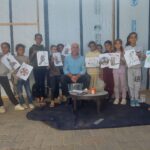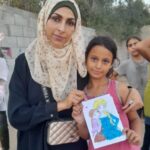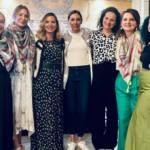Day 1 in Gaza
Gaza’s people live in half buildings. They have either run out of money part way through building their house as the blockade has killed the economy, or they had a (near) complete house which was bombed by Israeli warplanes and can’t afford to rebuild it. What buildings there are have walls like sieves – pock-marked with bullets. Many still have large holes where rockets have blasted through. It is agonisingly poor, mainly due to the blockade that has dessimated employment, leaving many scratching for food or dependent on charities and NGOs. It is not that they don’t want to or are physically, psychologically or mentally incapable of working – it is the pure lack of working opportunities that the siege which Israel, and to a lesser extent, Egypt, have condemned it to. It reminds me again that although our work here is important, the only long-term solution is to overcome the political mess so that families here like everywhere else can feed and educate their own kids as they would like to.
[custom_gallery gallery=”14″]We set off this morning after a brief visit to the office of my hosts, the Canaan Institute of New Pedagogy, to Beit Lahiya, the beleaguered town in the North of Gaza that has borne the brunt of many an attack by curse of its proximity to the border with Israel. And there I saw an institute which was the beneficiary of funds for two projects from us, and who will get more for the amazing work that they do. These wonderful people have set up a community project that combines care and prolonging Palestinian folkloric art with programmes for mothers and women in handicraft, economic wellbeing, and health and family issues, while also providing an outlet for kids. But looking at the work we funded, I can’t help but feel that the projects are half complete. We financed the refurbishment of a library space in the centre, and though the room looks great, the shelves are empty as the money wasn’t sufficient to buy the children’s books. So I have asked them to get me a list of the books they want while I am here, and we will get them. They created a play area from a sand, stone and dirt area that was unused by the centre, and it’s a flourishing garden now. However, the playground equipment there is very old, and I think we could do something far more enticing for the kids. So we will be asking a local artisan who has used local disgarded materials to make beautiful playground equipment elsewhere to turn his attention here. Then I’d like to see how else we can help.
[custom_gallery gallery=”15″]We then turned our attention to the schoolbooks that we purchased for the Samouni family, and which I carried with me into Gaza. These were donated to the Trade not Aid organisation for delivery to the Samouni family for the school that the family were due to build. The Samouni family suffered a much-reported incident, where the extended family was told by the Israeli army to take shelter in a house, and once they were inside, were then bombed by tank fire. Nearly 30 of them died, and the rest were heavily traumatised, especially as the Israeli military denied the Red Cross access to the family for 3 days, during which time there were a number of horrors including a child who could not move out from the dead corpse of his mother for the three days.
It turned out when I inquired that the school project has not got off the ground at all. With no school and no teachers, our books would sit on shelves and be wasted there. So I agreed to use an equivalent amount of funds to buy school clothes thet their children are in need of for the schools that they currently attend. That way, we are donating the same amount, but in a more relevant way. The books that I carried with me are going to make it to a number of other institutions.
I also met a man whom I suspect may be Gaza’s only MBE today. I sated the British part of me by visiting the British cemetry in Gaza, an immaculately maintained cemetry where soldiers from many commonwealth countries are buried for service in Gaza between 1917 and 1986. Most were young men who likely had no idea what they were fighting for in reality, probably much like 18 and 19 year old soldiers today. The cemetry is beautifully tended by an old man, Ibrahim Jerradeh, who was made an MBE for his half a century dedication to the cemetry. The cemetry, befitting a cemetry in the Holy Land, houses war dead of many religions – I counted Christian, Jewish, Muslim and Hindu at least. These graves have only been disturbed since being installed here by Israeli shelling, with 287 being shattered, while their care has been under the Palestinian authorities both secular and Muslim.
[slider gallery=”13″]As we left the cemetry, we heard an all too brief whoosh followed by an explosion. An Israeli warplane had bombed a building (we later found out that a 14 year old boy was killed by it) probably within a few hundred metres of where we were. It was loud enough that the three of us all instinctively ducked our heads as though faced with Israeli air firepower, ducking our heads would be the manouevre that could save our lives. Within a nanosecond, all the children in the building next to us started crying and screaming at once, as though it was the building itself screaming. And nonchalantly walking past were some older kids, maybe 12 years old or in their early teens.
I didn’t know which was sadder – that children so young were subjected to this to compound the trauma that over 99% of them had suffered when Israel near-carpet bombed Gaza 3 years ago, and would scream inconsolably at the sound of planes and bombs, or that the slightly older kids found warplanes bombing them just the natural state of affairs. And that’s not to mention the drones that you can hear constantly overhead here, or the Israeli observation balloons that you can clearly see in the sky watching our every move, or the pointless retaliation of the grad rockets from within Gaza back at Israel, the sniper fire from Israeli soldiers should you wander accidentally too close to the border, or, or, or. And these kids were playing earlier in the day with some of the most beautiful smiles on their faces – but smiles that were skin deep due to what they are being subjected to each day of living in Gaza.






Leave a Reply